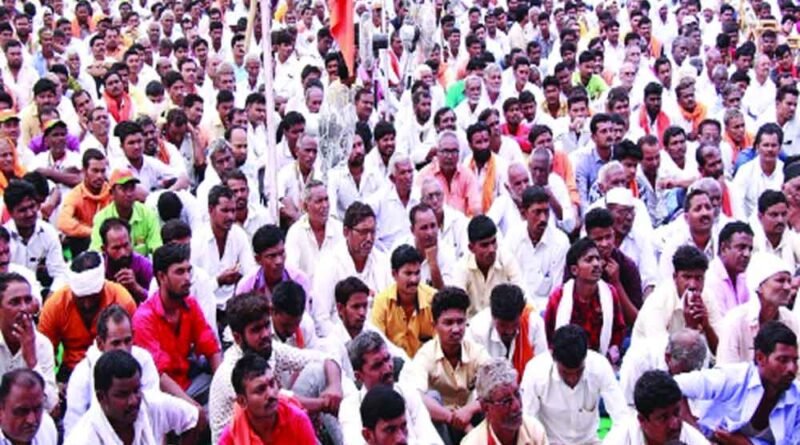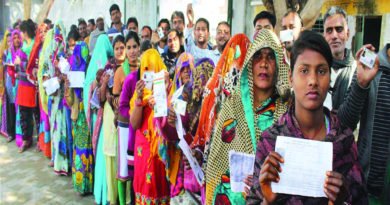Control population in noncoercive way
There is urgent need to manage the demography of the country else all the development efforts could be nullified
As per the World Population Prospectus (WPP ,2022) report, India is all set to surpass China to become the most populous country of the world by 2023. India’s population is projected to be 1,429 billion by next year when China would have 1,426 billion people. It is estimated that India will have 1,688 billion people, far ahead of China’s population which will drop to 1,317 billion by 2050 whereas the world’s population would reach 8 billion on November 15, 2022.
Rates of population growth vary significantly across countries and regions. By 2050, more than half of the projected world’s population will be concentrated in just eight countries- India, Nigeria, Pakistan, Ethiopia, Egypt, Congo, Philippines and Tanzania.
Disparate growth rates among the world’s largest countries will re-order their ranking by size. The 46 Least Developed Countries (LDCs) are among the world’s fastest growing. Many are projected to double in population between 2022 and 2050, putting additional pressure on resources and posing challenges to the achievement of the UN’s Sustainable Development Goals (SDGs).
The report warns that the share of the global population aged 65 years or above is projected to rise from 10% in 2022 to 16% in 2050. Thus, these countries should take steps to adopt effective programmes like improving the sustainability of social security and pension systems and by establishing universal health care systems.
Coming back to India, the findings of a survey indicates that there were only five states whose fertility rate was above the replacement level of 2.1 ( the rate at which a population exactly replaces itself from one generation to the next)- Bihar, Meghalaya, Uttar Pradesh,Jharkhand and Manipur. These states are also backward in terms of per capita income. This makes it obvious that the population growth adversely impacts economic prosperity.
The fact that Jains, Sikhs and Buddhists have fertility rates well below the national average can be largely attributed to economic security among members of these communities. The fifth edition of India’s National Family Health Survey,2021 pointed out for the first time that the Total Fertility Rate (TFR) had hit 2.0 or below the replacement rate of 2.1.
This decline in India’s population is in line with what is being observed in developed countries and is expected to translate into improved living standards. The fact that the decline in population is possible without state coercive policies has been demonstrated by India’s two most populous states, i.e. Uttar Pradesh and Bihar.
Now, the focus has shifted to whether we can reduce poverty, provide healthcare facilities, education etc. The available data clearly shows that during the coming decades, cohorts of 0-14 years and 15-24 years will continue to decline while those of 25-64 and 65+ will continue to rise. This indicates that India will continue to have a large population of working age people who will be expected to support a growing number of aged. Providing social security to this growing 65+ category of population would be a big challenge .
The welfare schemes of the government will have to factor in the rising numbers and the availability of resources to ensure that all eligible beneficiaries are covered. Healthcare, housing and education sectors would come under great strain. The need for skilling is a prerequisite for 25-64 age groups because skilling is the only way to ensure that they are productive and have better incomes to take care of the aged. This is the major policy challengeboth for the cohort and the future governments.
Another segment of society which needs special attention is the Girl Child. Effective, job-oriented education is a way out. There is a need to have open discussions keeping the size of the family small.
The NFHS reports revealed that “unmet need for family planning methods” are highest among lowest quintile (11.4%) and lowest among the highest wealth quintile (8.6%) implying that the usage of modern contraceptives increased with income. 66.3% of women who are employed are more likely to use modern contraception compared with 53.4% of women who are not. The NFHS (2019-21) indicates that of all the girls and women above the age of 6 years,only 16.6% were educated for 12 years or more.
To make the situation worse, ASER reports point out the quality of education imparted is poor. Female education is the determining factor of the status of malnutrition amongst the children below the age of five. More than 35% of our children below the age of five are stunted. They will be trapped in poverty and would remain dependent on others throughout life.
Again, comparing the reports of NFHS-5 (2019-21) and NFHS-4 (2015-16), we find that 57 per cent of women in the reproductive age group of 15-49 are anaemic in 2019-21 in comparison to 53% in 2015-16. This unbalanced growth need to change and investment in healthcare and education is the key to prosperity,especially of the Girl Child by providing them more than 12 years of quality job-oriented education. The improvement of human development index of our masses leading to prosperity at all levels will not be possible until and unless we take the flagged issues seriously and put in sincere and honest efforts to solve the problems.
(The writer is a senior journalist and Chairman, Panwar Group of Institutions, Solan, Himachal Pradesh. The views expressed are personal.)
Source: The Pioneer




